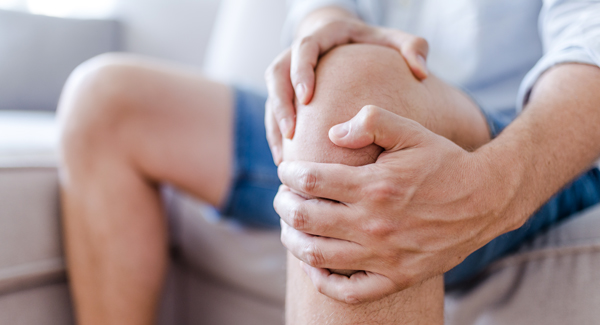First Steps Toward Osteoarthritis Treatment
The most powerful treatments for osteoarthritis (OA) are good for your overall health too. Here’s how you can relieve pain and stay as strong and healthy as possible.
Make Exercise a Habit
The best thing you can do for your joints is to stay active. Move your body. Move your joints.
A good fitness plan should include cardio, strength training, flexibility and balance exercises. Mixing it up will help you keep things interesting. Find a workout buddy to keep you company – and motivated.
Not long ago, people with OA were told to do gentle exercises like walking and swimming. But having OA doesn’t mean you must stop jogging and playing sports. Seek advice from a physical therapist, a certified fitness instructor or a sport medicine doctor to be sure what’s safe for you.
You don’t have to be a super athlete, though. Do what you enjoy and start slowly. Three 10-minute walks spread through the day is as good as one 30-minute walk. Push yourself a little more as you get stronger. If certain joints bother you a lot, check out this resource that helps you protect them as you exercise.
Lose Weight
Your joints will be much happier if you take some pressure off of them. Studies show that losing 5% of body weight can improve pain and mobility. And it’s not just from reducing strain on the joints. Fat cells produce proteins that fuel inflammation in your body and joints. Less fat means less inflammation and less pain.
Losing weight is hard, but even small changes to your lifestyle can move the scale in the right direction.
Eat Like an Italian
Foods that increase inflammation can contribute to heart disease, diabetes, cancer and joint pain. Sugar, red meat, and processed foods are some offenders. Instead, focus on plant-based proteins, fish, lots of fruits and veggies, and healthy fats like avocado and olive oil.
Stay Positive
You’ve heard it before. Positive thinking is good for your health. But research proves that it works. Here’s why: pain and emotion centers in your brain are linked.
Scientists say these connections allow your brain to process different sensations at once. But there’s a cost, says Beth Darnall, PhD, a pain psychologist and associate professor at Stanford University in California. “Negative emotions are like gasoline thrown on the fire of pain,” she says. The opposite is also true. Positive emotions may not turn off pain completely, but they can lower the temperature.
A good way to care for your emotions is by making personal connections. Join the Live Yes! Arthritis Network and plug into a powerful arthritis community. Get valuable information from people just like you that can help you take control and live your best life.
Sources
Messier SP, et al. Weight loss reduces knee-joint loads in overweight and obese older adults with knee osteoarthritis. https://www.ncbi.nlm.nih.gov/pubmed/15986358
Urban H and Little CB. The role of fat and inflammation in the pathogenesis and management of osteoarthritis. https://academic.oup.com/rheumatology/article/57/suppl_4/iv10/4850525
Diagnosed With Osteoarthritis?
Get the latest news and tips about living with OA in the Living Your Yes! e-newsletter.


